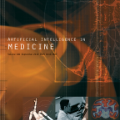Spatiotemporal activity prediction, aiming to predict user activities at a specific location and time, is crucial for applications like urban planning and mobile advertising. Existing solutions based on tensor decomposition or graph embedding suffer from the following two major limitations: 1) ignoring the fine-grained similarities of user preferences; 2) user's modeling is entangled. In this work, we propose a hypergraph neural network model called DisenHCN to bridge the above gaps. In particular, we first unify the fine-grained user similarity and the complex matching between user preferences and spatiotemporal activity into a heterogeneous hypergraph. We then disentangle the user representations into different aspects (location-aware, time-aware, and activity-aware) and aggregate corresponding aspect's features on the constructed hypergraph, capturing high-order relations from different aspects and disentangles the impact of each aspect for final prediction. Extensive experiments show that our DisenHCN outperforms the state-of-the-art methods by 14.23% to 18.10% on four real-world datasets. Further studies also convincingly verify the rationality of each component in our DisenHCN.
翻译:旨在预测特定地点和时间用户活动的随机活动预测,对于城市规划和移动广告等应用来说至关重要。基于高分解或图形嵌入的现有解决方案存在以下两大限制:(1) 无视用户偏好细微相似之处;(2) 用户的模型相互交织。在这项工作中,我们提议了一个称为DisenHCN的高射神经网络模型,以弥合上述差距。特别是,我们首先将精细的用户相似性以及用户偏好和随机活动之间的复杂匹配划为一种混杂的超强数据。然后,我们将用户的表达方式分解为不同的方面(定位、时间觉悟和活动觉悟)和构建超强光学上的相应综合特征,从不同方面捕捉高音量关系,并分解每个方面对最后预测的影响。广泛的实验显示,我们的DisenHCN在四个真实世界数据集中将状态方法比14.23%到18.10%相容。还令人信服地核查了我们每个组成部分的理性。
相关内容
- Today (iOS and OS X): widgets for the Today view of Notification Center
- Share (iOS and OS X): post content to web services or share content with others
- Actions (iOS and OS X): app extensions to view or manipulate inside another app
- Photo Editing (iOS): edit a photo or video in Apple's Photos app with extensions from a third-party apps
- Finder Sync (OS X): remote file storage in the Finder with support for Finder content annotation
- Storage Provider (iOS): an interface between files inside an app and other apps on a user's device
- Custom Keyboard (iOS): system-wide alternative keyboards
Source: iOS 8 Extensions: Apple’s Plan for a Powerful App Ecosystem




